Portstewart Strand: Probably The Best Beach in Northern Ireland
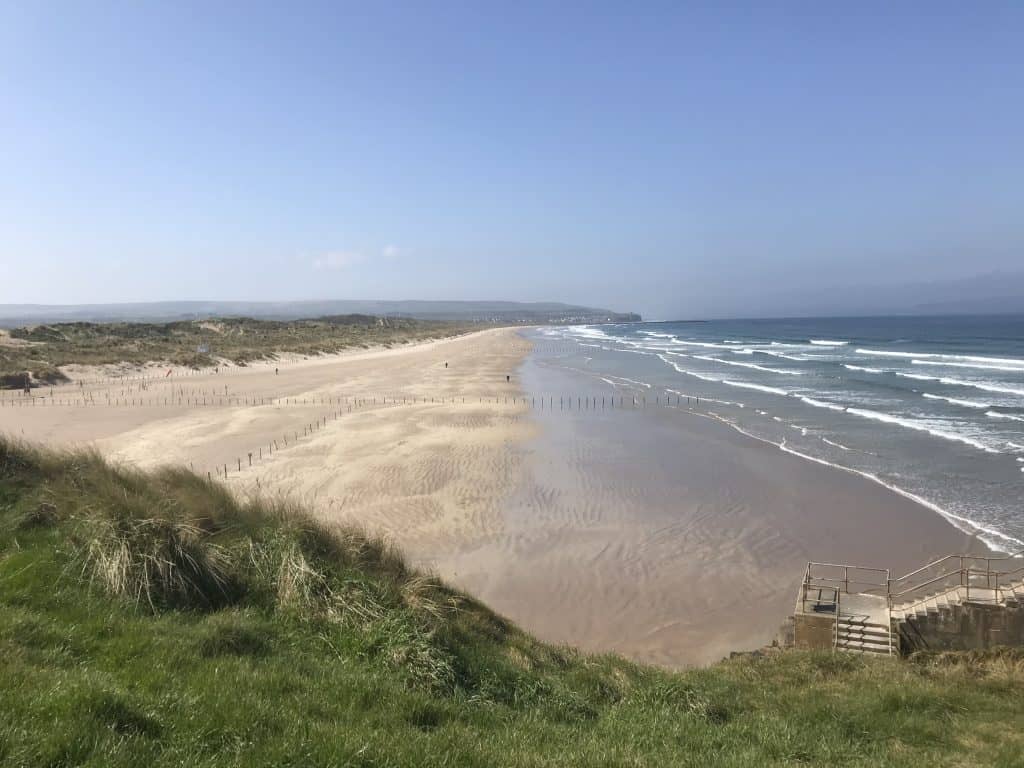
Portstewart Strand 118 Strand Road, Portstewart. BT55 7PG
Portstewart Strand also referred to as ‘The Strand’, is one of Northern Ireland’s finest beaches, known for its golden sand, tall dunes, and panoramic views of the north coast.
The scenic beach is one of the top 10 popular tourist destinations, attracting 180,000 visitors annually.
The two-mile-long beach in Portstewart, located on the northern ocean coast of the island of Ireland, is a popular destination for families and walking enthusiasts.
Portstewart Strand is between the popular seaside resort of Portstewart and the mouth of the River Bann. It was bought by the National Trust in 1981.
Portstewart Strand has received the European Blue Flag status due to its excellent water quality and management.
Walking at Portstewart Strand
You can enjoy a coastal walk at Portstewart Strand, which features scenic sand dunes, dramatic cliffs, and golden sand, creating a memorable experience.
Beach walks
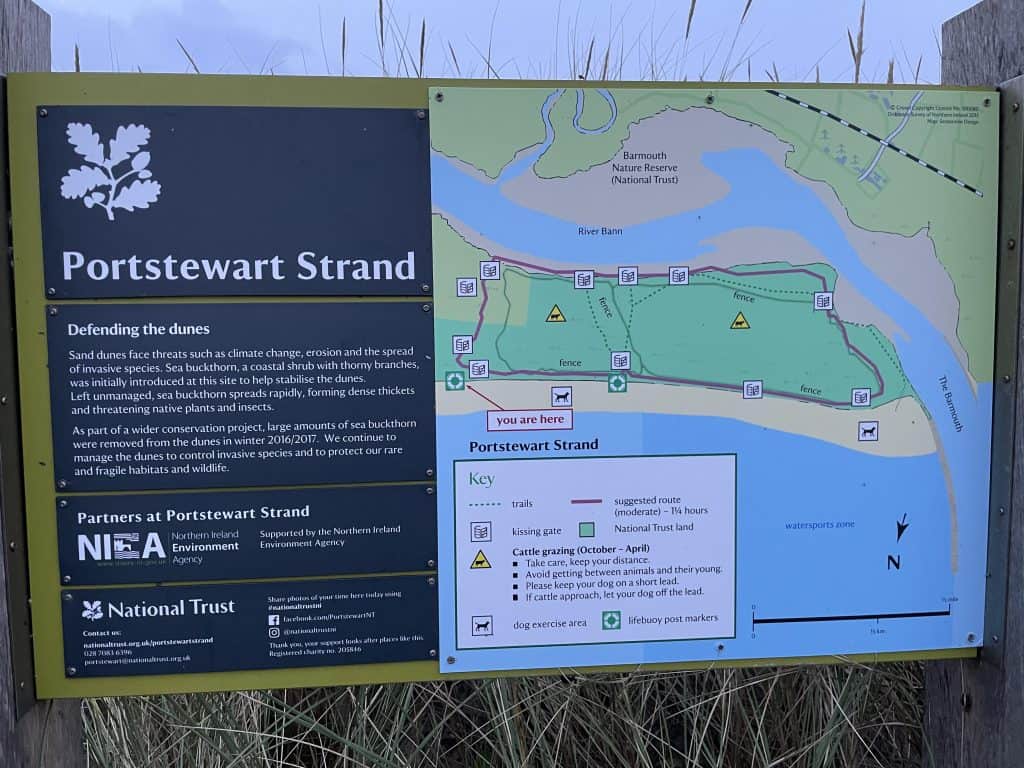
Visitors can enjoy a leisurely walk along the extensive stretch of sandy beach and admire the scenic views of Inishowen headland and Mussenden Temple on the cliffs above.
Dune walks
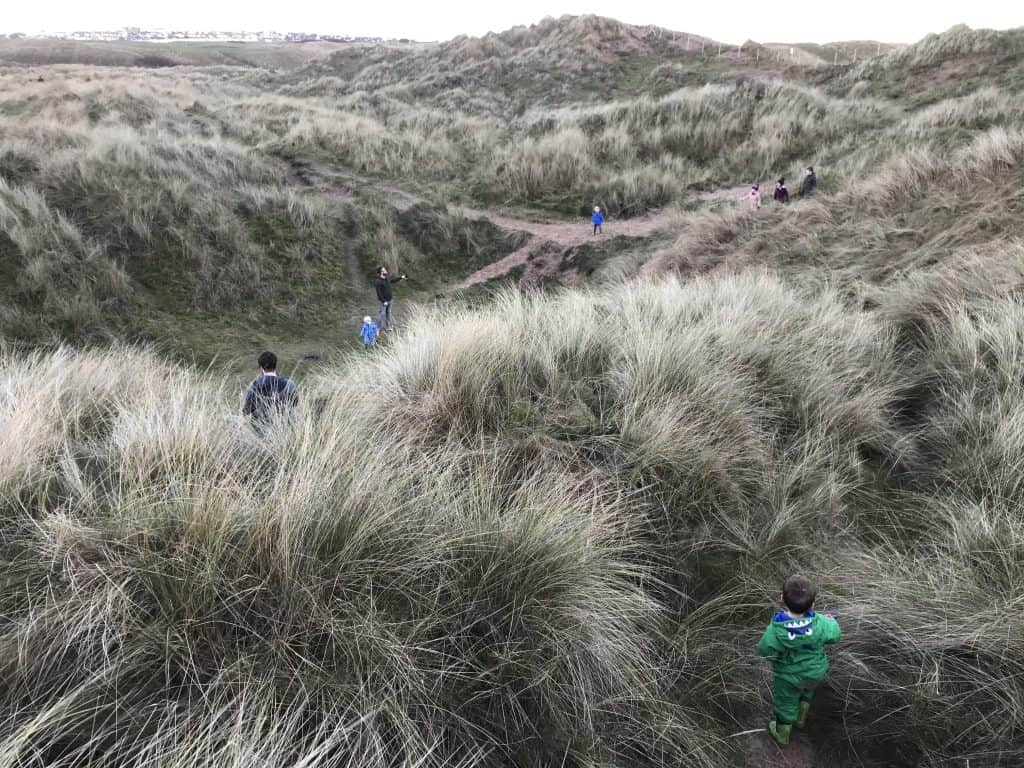
Experience a unique landscape as you explore 6,000-year-old sand dunes reaching heights of up to 98 feet (30m).
Causeway Coast Way
Portstewart Strand serves as the beginning of the Causeway Coast Way, a 33-mile-long trail to Ballycastle. The journey offers breathtaking views and visits to iconic sites such as the White Rocks outside Portrush, Dunluce Castle, the Giant’s Causeway, and the Carrick-a-Rede rope bridge, among others.
Inclusive Beach
Portstewart Strand is an Inclusive Beach. It works with the Mae Murray Foundation to provide access, parking, disabled toilets, and a beach equipment loan scheme. The toilets have hoisting and adult-sized changing bench facilities, meeting the full Changing Places standard whenever possible. Visit the Mae Murray Foundation website to learn more and book beach equipment.
Sauna Experience
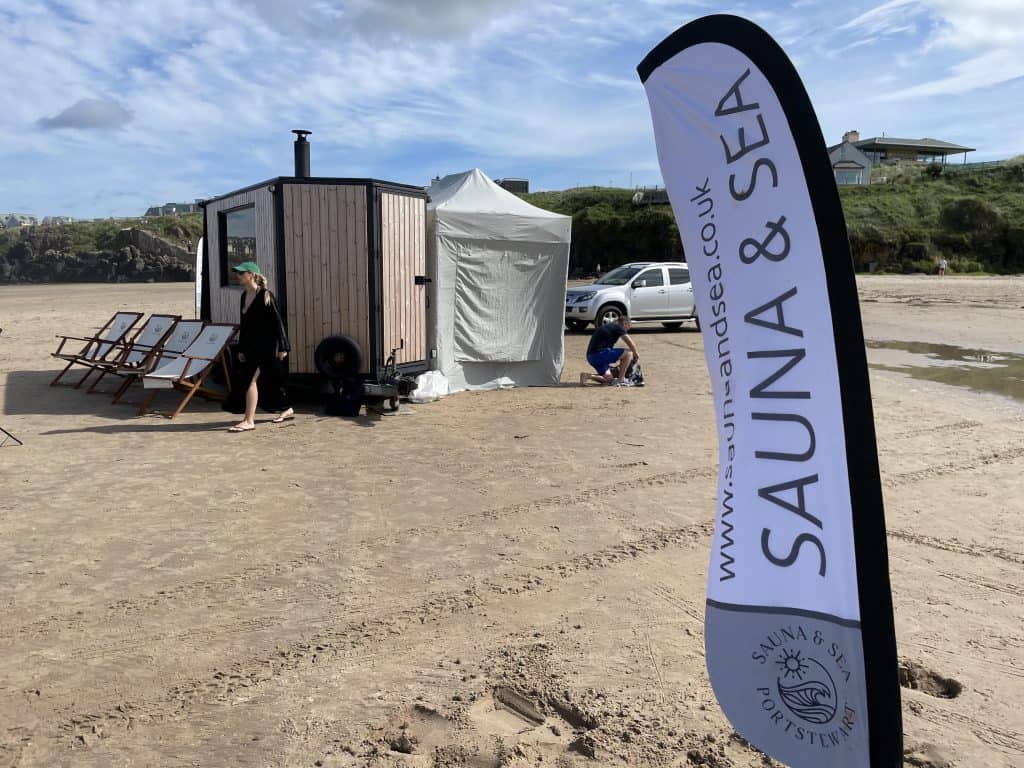
Experience a Sauna and Sea adventure on Portstewart Strand during the summer of 2023. This traditional wood-fired Finnish sauna offers the opportunity to relax and enjoy various weather conditions while benefiting from the sauna’s rejuvenating heat. For more information and bookings, please visit the Sauna and Sea website.
Opening Times
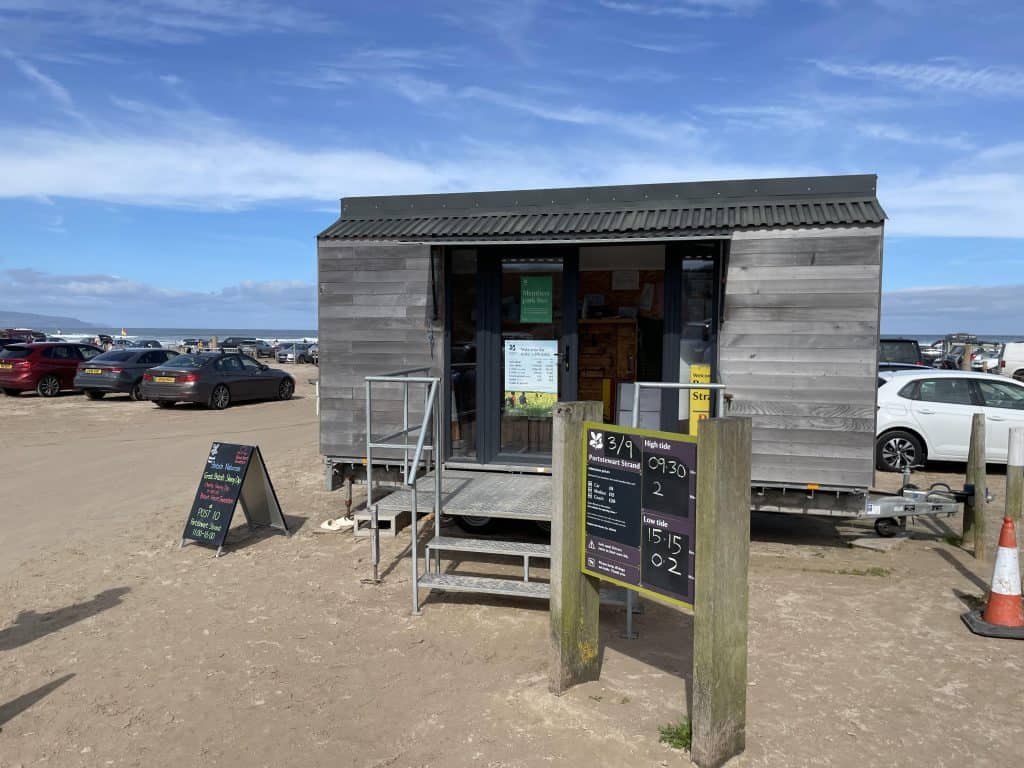
The opening times may change depending on the weather, tide and time of year. Vehicles can enter up until one hour before closing time. The toilets may be open for longer than the stated times. Changing Places facilities are only available on Saturdays and Sundays until 1 April.
History:
One of the little-known facts about this place is that its dunes are some of the tallest in Ireland. The dune system, which is 6,000 years old and covers 180 acres, reaches impressive heights of up to 100ft.
Conservation is a significant aspect of the history of Portstewart Strand, as it is officially recognized as an area of Special Scientific Interest and Conservation.
The dune system was installed in the Bann Estuary Area of Special Scientific Interest in 2000, because of its delicate habitats and wildlife. Various species of butterflies and orchids, including the rare bee orchid, have been observed and can be seen from the marked trails.
Attractions:

A portion of the dunes are owned by Portstewart Golf Club, which provides a scenic backdrop for recreational activities.
A new visitors’ facility was opened at the beach on April 28, 2008, by the National Trust. The project received £450,000 in funding, with contributions from the Northern Ireland Tourist Board.
Access:
Both cars and pedestrians have access to the beach from the Strand Head Road, located just beyond the golf club. Pedestrians can also access the beach from Port Path in the town.
Life and Legend
The river Bann used to flow into the sea at the beach entrance. However, due to the sand moving westward since the last ice age, the river now meets the sea 2 miles to the west. Two large sea walls contain the river, allowing for a walk that ends in the Atlantic. Most North Coast beaches have rivers to the west, except for White Park Bay and Portrush, where rock headlands prevent the sand from continuing. The dunes were fully formed around 6,000 years ago and can reach up to 30 meters.
The west end of the strand is known as the Barmouth due to the sand crossing that threatened ships heading towards Coleraine. Both the Barmouth and Grangemore in Castlerock are significant nature reserves featuring a distinct blend of salt marshes, freshwater marshes, and dunes. These areas serve as habitats for numerous waterfowl and waders.
Prehistoric people inhabited the areas of Portstewart and Castlerock, utilizing the abundant resources of fish and shellfish in the Bann River, which continues to be significant for salmon and eel populations.
During Victorian times, gentlemen searched for flint tools, beads, and pottery to gain insights into their early ancestors. However, they were pleasantly surprised to see the Bronze Age and Roman era ornaments.
Holidays on the beach have a long history. Gentlemen ran thoroughbred horses in races until the 1930s. Seeing the horses running along the beach, creating waves and kicking up the water must have been a sight. This beach allows cars, but many people enjoy walking to the estuary of the Bann.
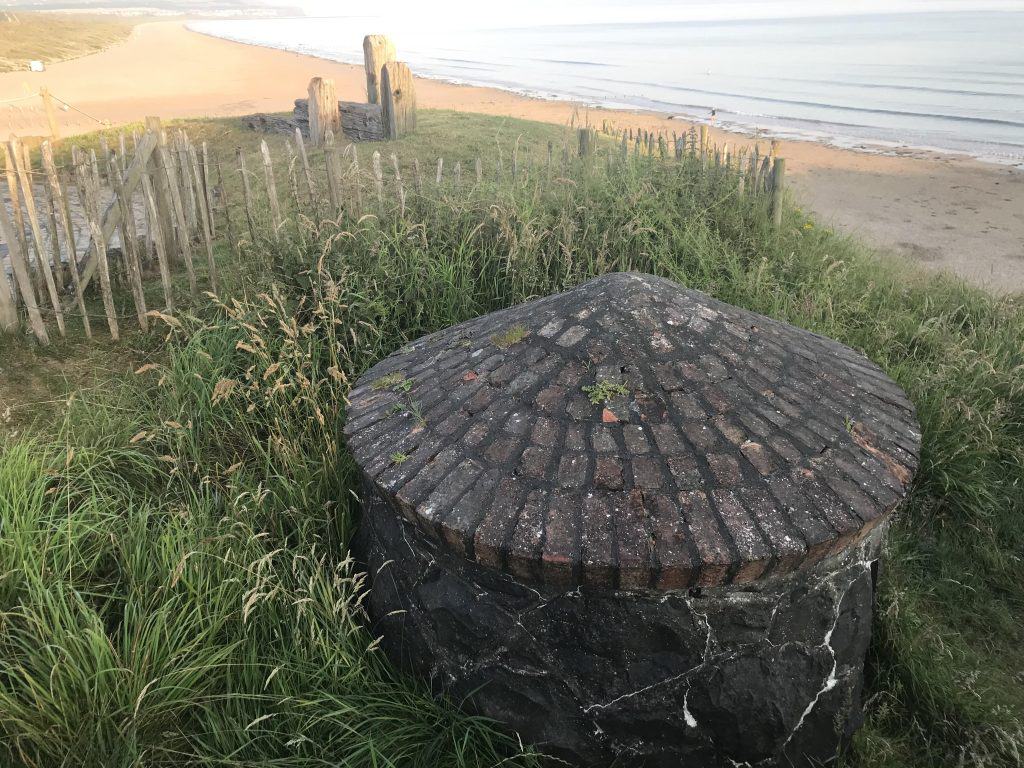
A holy well called Tubber Patrick is on the basalt cliff next to the beach. It served as a source of fresh water for prehistoric people and gained a legendary reputation for its healing properties. Visitors would wash their wounds or drink the water in hopes of finding a cure.
Accordingly, a Celtic legend claims that the first Irish harp, Inverglass on the Bann estuary, was invented in this location. A man and his wife lived happily by the Bann until the wife became enraged and ran away one day. She sought refuge on the beach of Portstewart, where a whale’s skeleton lay with sinews between its ribs. The wind caused the sinews of the whalebones, producing soothing sounds that lulled the wife into a deep sleep. After days of searching, the distressed husband found his wife asleep on the sand. He realized that the calming music of the whalebones had pacified her. When his wife woke, he took her hand and led her back home. The following day, the husband went into the woods, cut a curved branch, and strung it with animal sinews. From then on, whenever his wife was upset, he played on his new instrument, again bringing peace.
In 1992, a whale washed ashore on the strand, potentially adding to the legend of the symbolic instrument of Ireland.
Are Dogs Allowed On Portstewart Strand
Dogs are allowed at Portstewart Strand, where visitors can enjoy two miles of sandy beach and walk and play in the water.
Recommended locations for dog walking at Portstewart Strand.
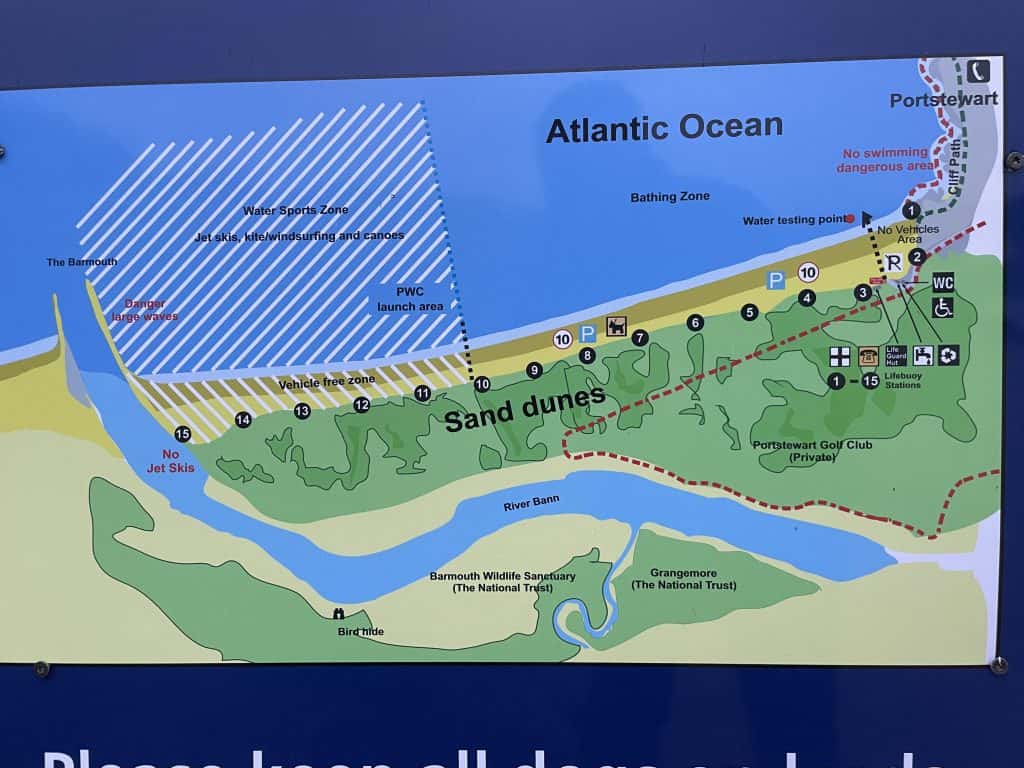
Portstewart Strand begins the 33-mile (53km) Causeway Coast Way to Ballycastle, offering a coastal adventure for dog owners to enjoy while wearing their walking boots.
If you prefer a shorter walk, you can walk along the strand or take a 2-mile (3.2km) circular route through the dunes. The trail follows through the 6,000-year-old sand dunes until it reaches the river’s edge at the Bann Estuary.
Dogs must be on a leash while on the beach. Dogs are allowed to be off-leash beyond post 10.
Water for dogs can be found next to the entrance and at Harry’s Shack (which is also dog-friendly), and there are dog waste bins available throughout the estate.
What are the things to keep in mind at Portsteward Strand?
Please ensure that your dog remains on a lead while on the beach. Cattle graze in the dunes and can be startled by dogs off leads. Dogs running freely can also disrupt ground-nesting birds and local wildlife. You may release your dog from the lead after passing post 10.

